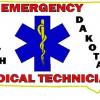-
Posts
34 -
Joined
-
Last visited
engine173351's Achievements
Newbie (1/14)
0
Reputation
-
Last year, I began working as a part-time paramedic for a medium-sized ALS service that primarily conducts dialysis and non-emergency interfacility transports, as well as emergency transports for SNFs and nursing homes. The service is fairly standard in terms of setup, with updated equipment and protocols, and is one of the larger services in the area. After I had been on the job for a few months, the service's QA/QI person (who reviews every patient care report submitted) sent out a service-wide memo warning all paramedics to "act to their level" when treating patients, and that all patients being transported to an emergency department - regardless of their condition - absolutely need to have a monitor connected and an IV established. A few weeks after that, I transported a patient from a local nursing home to the emergency department for a possible fracture of the thumb secondary to accidentally closing a door on it. In my judgement, that patient did not require a monitor or an IV. The following day, the QA/QI person approached me and cautioned again that all ED patients must have an IV and a monitor. The dilemma here is that management is stripping paramedics of their clinical judgement when it comes to interventions. I am aware of upcoding/upbilling in the reimbursement process, and am not sure of this situation would constitute that. What would you do and how would you approach this?
-
I'm a paramedic student currently doing field internships. We recently responded to a dispatch complaint reporting a seizure in a park. An engine company arrived before we did and advised that a 48-year old male patient had apparently collapsed, displayed seizure-like activity, and went into full arrest with subsequent bystander CPR. They delivered two automated shocks prior to our arrival and were able to get a return of a pulse. His wife stated that his only medical history was a past CVA. On our arrival, the patient was unresponsive with agonal respirations and showed sinus tachycardia on the monitor. We got him loaded into the medic unit and prepared to intubate. During this entire time, he was literally spewing blood from his mouth like a fountain (which made us think about the possibility of a GI bleed). When I went in with the laryngoscope, I could see nothing but red. Even after suctioning several times, the blood would continuously pool up again and again. The lead paramedic was able to intubate, which he called a "lucky shot in the dark." After the tube was in place, we found that the blood stopped coming from his mouth and was now shooting up out of the tube onto the floor and cabinets. Even after endotracheal suctioning, the flow wouldn't stop and backed up into the BVM at one point. The patient arrested a second time in the medic unit. After two shocks, he converted back into sinus tachycardia. We got him to the hospital, where an x-ray showed that both of his lungs had massive pulmonary edema. After asking the attending emergency physician and the lead paramedic, no one seemed to know why a patient would have such a large amount of blood coming from the lungs (estimated to be over a pint from the scene to the hospital). What is your input?
-
I'm currently a paramedic student in a Bachelor of Science in EMS program at a university in Nebraska. Field internships are primarily done through local fire and rescue departments, though we have the option of traveling to other agencies states to complete internships if the university is able to put a ride-along agreement in place with them. For spring break in March, I am interested in traveling to Minnesota to do an internship there. Does anyone know if the agencies (Hennepin EMS, Saint Paul Fire, etc.) in that area allow paramedic student ride alongs? Any help or leads would be appreciated.
-
So next March will be my first recertification as an EMT-Basic. I have 44 of my 48 continuing education hours, but have not taken the 24-hour refresher course. In two weeks, however, I will be starting an 11-month paramedic program. Can the hours included in a paramedic course count towards the required 24 hours?
-
Angela Fleming-Medcor started following engine173351
-
engine173351 started following Angela Fleming-Medcor
-
Hey all. I just became Nationally Registered as an EMT-Basic three weeks ago and also received my state certification. Looking through the re-certification booklet that came with the patch and card from the state, and then looking at the documents from National Registry, a few questions were raised concerning re-certification. First, is there a specific time frame in which I take an EMT refresher course? Second, can Continuing Education hours or a refresher course earned in one state be used towards re-certification in another state?
-

Refusing To Assist With CPR Because of No Gloves?
engine173351 replied to engine173351's topic in Patient Care
As for what we were using, we had a Zoll E-Series with us (You know, the one that can be thrown off a building or run over with a truck and still work? That one.). As for what "mode" it was in, I have no idea. Like everyone says, the guy was deader than dead (without any obvious signs of death). But the two paramedics I rode with decided to work it. -

Refusing To Assist With CPR Because of No Gloves?
engine173351 replied to engine173351's topic in Patient Care
Thanks everyone for your advice. I guess I saw things differently, being one who would drop everything in a heartbeat (no pun intended) to assist with CPR, duty status aside. I think I made a bigger deal out of it that it was, and I appreciate everyone's input. -
So we're working on a patient in the ED's "Trauma Room". The patient, a male in his mid-40's, was pulseless and nonbreathing when we arrived on scene. According to his family, they came home and found him on the floor, so it was an unwitnessed arrest. We hooked him up to our monitor, which advised "no shock" because he was in asystole. The paramedics get him intubated on scene and we deploy the AutoPulse, which eventually stops for whatever reason. So we begin manual compressions. When we get to the ED, there's an off-duty paramedic there who assists us with unloading the patient. We get him into the Trauma Room and the staff continues resuscitative efforts. The two paramedics who I was riding with are assisting the ED staff, so it's me and an EMT-I who perform chest compressions. After about six or seven minutes, the both of us are becoming exhausted, having switched out several times. So as the EMT-I continues compressions, I go out into the open area of the ED and ask for two people to come and assist. I get two people, the off-duty paramedic and another person (who has to leave when called out of the room). When the EMT-I signals for me to take over, I ask the off-duty paramedic to do compressions, as I feel like I'm too exhausted. But he says "Nah, I don't have any gloves," and proceeds to leave the room. So I go ahead and relieve the EMT-I before two nurses eventually assist with compressions. Unfortunately, our patient didn't make it, which was evident considering the fact that he could have went down four hours or four minutes before we got to him. Here's my question. Was it in some way "wrong" for the off-duty paramedic to refuse to assist and leave? No gloves? I can guarantee you that there's at least eight, if not more, boxes of gloves mounted on the walls of the Trauma Room. I can understand if a person doesn't want to help, but it was clear that we needed assistance for compressions. To me, that was a cheap excuse. The real question is, should I mention it to someone at my service?
-
Okay, I know I'm going to probably get yelled at. Let's start from the beginning. I've been doing ride time with the local ambulance service for the past month as a first responder. Last week, we responded to a female who had slit her right wrist in an apparent suicide attempt. The laceration was approximately an inch long and was bleeding minimally. Upon our arrival, she had visible dried blood on the front of her shirt. As for her hands, I did not notice any blood because I didn't look. Because she had been sitting in the back of a police patrol vehicle (the officer found her and requested us), myself and an EMT-B utilized the extremity carry to move her to the cot, as she was ETOH and wouldn't move by herself. As the EMT-B took the legs, I placed my hands under her armpits and was proceeding to grab her arms, but instead, she grabbed my bare arms with her hands. As soon as we got her moved to the cot, I inspected both of my arms and looked for any visible blood, but didn't see any (I assumed that since she was bleeding from the laceration, she might have blood on her hands). Once we arrived at the ED, I washed both arms with hot water and soap, and then covered them in alcohol sanitizer. But since I didn't see any visible blood on my arms, and didn't have any open breaks of the skin, I didn't think anything of it (which was a really stupid move on my part), and therefore didn't report it to anyone. A couple of days ago, an EMT-B from another shift cut his finger with a shard of glass that had a patient's blood on it. He was cleaning the ambulance and didn't see it. He reported it immediately to the ED, who placed him on medication and was able to get the patient to submit to a blood test. After that occurred, I began to think that I had made a mistake by not reporting the incident that I experienced. What should I have done, and what should I do know? Is it still worth it to report this? And who do I report it to?
-
Okay, I know I'm going to probably get yelled at. Let's start from the beginning. I've been doing ride time with the local ambulance service for the past month as a first responder. Last week, we responded to a female who had slit her right wrist in an apparent suicide attempt. The laceration was approximately an inch long and was bleeding minimally. Upon our arrival, she had visible dried blood on the front of her shirt. As for her hands, I did not notice any blood because I didn't look. Because she had been sitting in the back of a police patrol vehicle (the officer found her and requested us), myself and an EMT-B utilized the extremity carry to move her to the cot, as she was ETOH and wouldn't move by herself. As the EMT-B took the legs, I placed my hands under her armpits and was proceeding to grab her arms, but instead, she grabbed my bare arms with her hands. As soon as we got her moved to the cot, I inspected both of my arms and looked for any visible blood, but didn't see any (I assumed that since she was bleeding from the laceration, she might have blood on her hands). Once we arrived at the ED, I washed both arms with hot water and soap, and then covered them in alcohol sanitizer. But since I didn't see any visible blood on my arms, and didn't have any open breaks of the skin, I didn't think anything of it (which was a really stupid move on my part), and therefore didn't report it to anyone. A couple of days ago, an EMT-B from another shift cut his finger with a shard of glass that had a patient's blood on it. He was cleaning the ambulance and didn't see it. He reported it immediately to the ED, who placed him on medication and was able to get the patient to submit to a blood test. After that occurred, I began to think that I had made a mistake by not reporting the incident that I experienced. What should I have done, and what should I do know? Is it still worth it to report this? And who do I report it to?
-

Vollie Non Emerg Ambos Vs Paid State Staff
engine173351 replied to Penthrox's topic in General EMS Discussion
So what is the summary of all of this? Non-emergency ambulances are being staffed with first aid whackers? Not to turn the subject in a different direction, but the local volunteer fire department just acquired an ambulance (Star-Of-Life, stretcher, lights, kitchen sink, the whole nine yards) for use as a "rescue truck" (as in carrying the Jaws and other tools). But just one of about 20 of the firefighters on the department is an EMT-B; the rest are CPR/AED trained. So why would you need an functioning ambulance to carry a JOL, when you could stash it on one of the pumpers? The department isn't licensed by the state as an ambulance service, so it's a bit strange. -
Creighton University Medical Center (CUMC) is located on Cuming Street in Omaha, Nebraska. Talk about awkward.
-

What Do You Carry On Your Person?
engine173351 replied to AnthonyM83's topic in Equiqment and Apparatus
I like how the guy gives a reason for everything he carries "on his person". It's like saying, "I carry my own personal drug kit, monitor and trauma pack in my trunk. But that's only because it can take up to three hours for an ambulance to arrive, and I live in a very rural area." Or, "I've rigged our family Suburban to be able to carry two backboards just in case." -
I carry a pair of Stanley safety glasses, the kind that go over your prescription glasses. When I'm not using them, I keep them covered in a glove so the lens don't get scratched.



